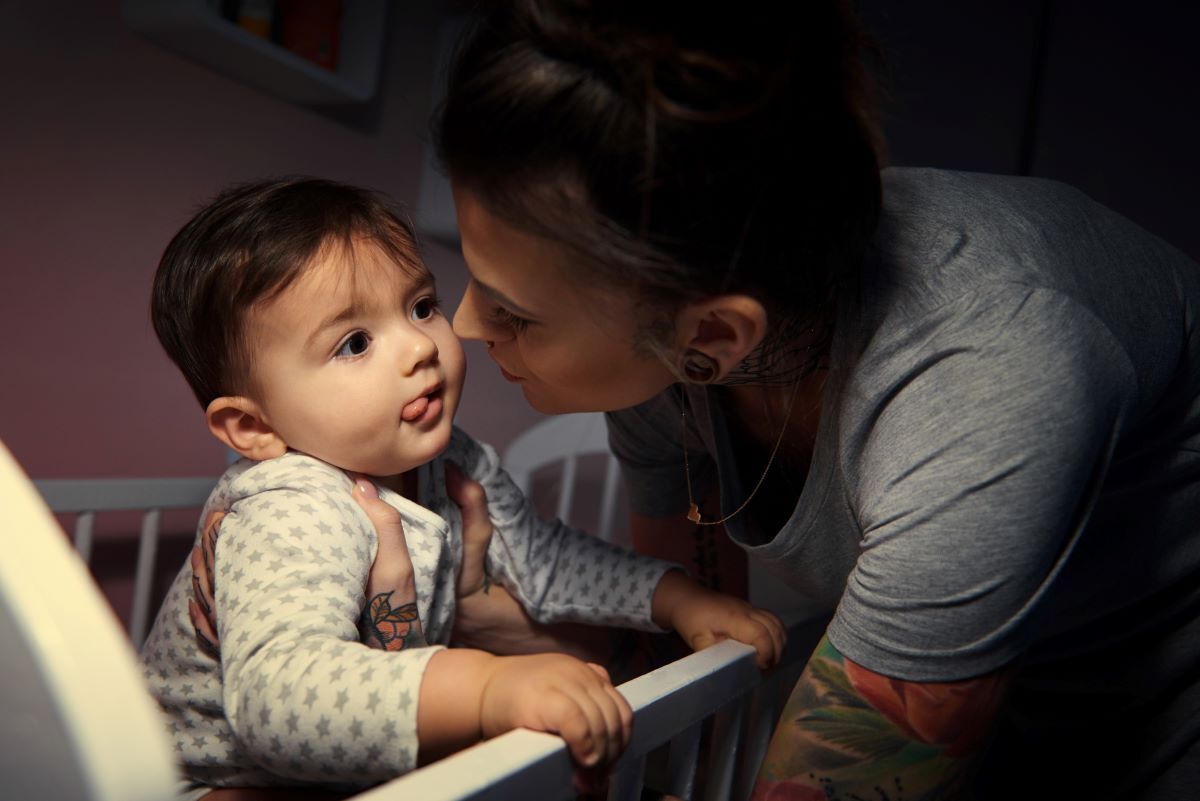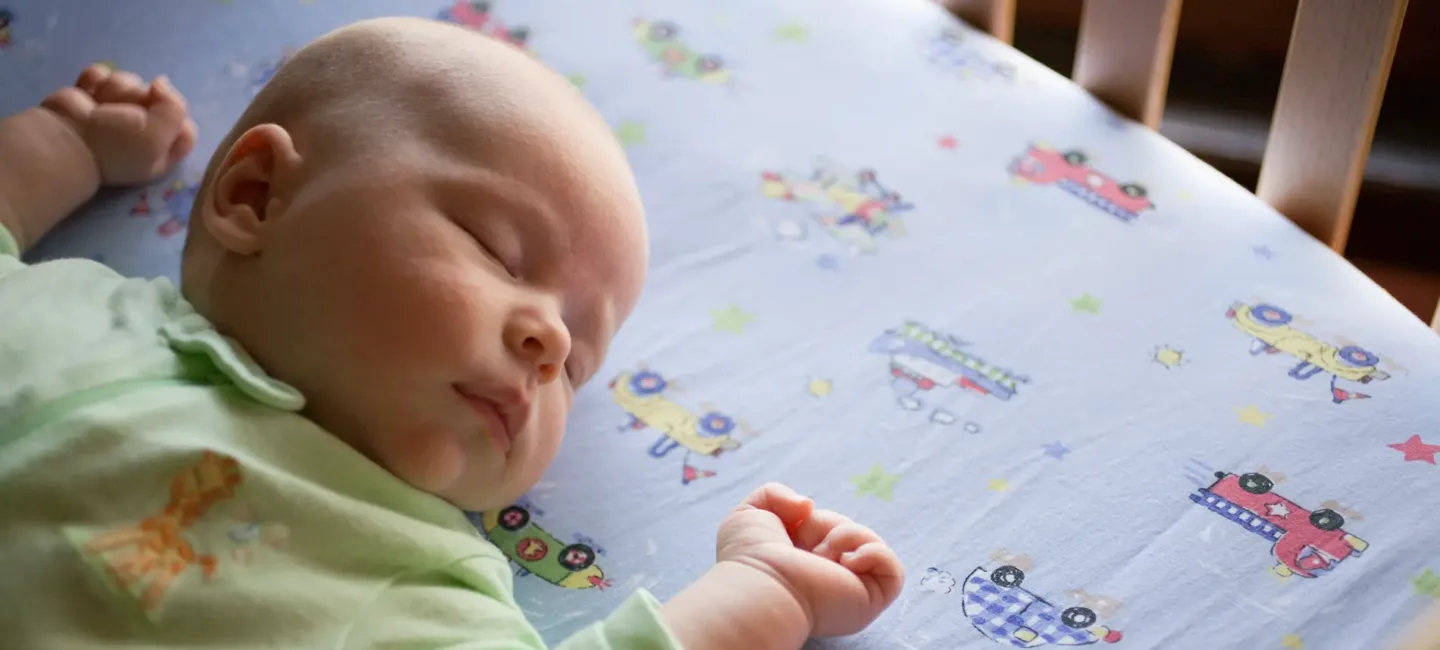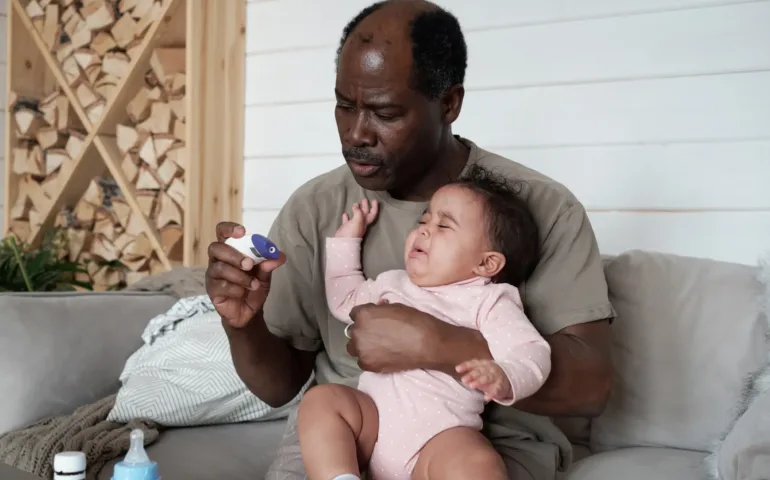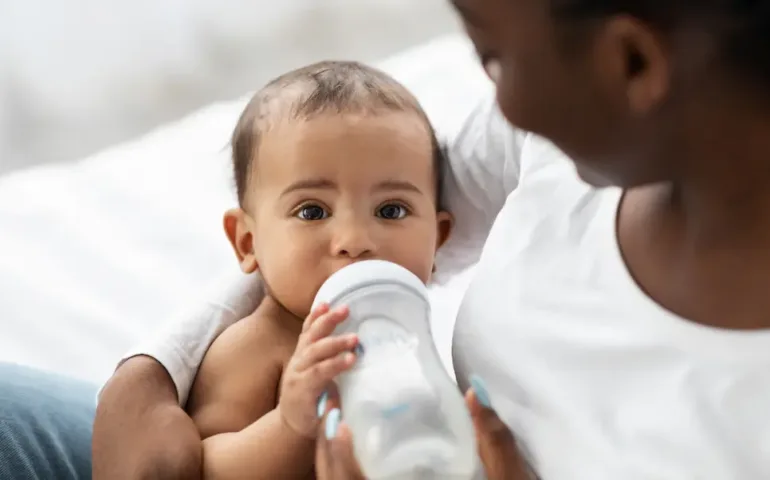
Understanding your baby’s sleep
A baby’s sleep is as fascinating as it is full of questions: before addressing the topic of waking, let’s first look at the key points about an infant’s sleep cycles.Infant sleep cycles
A baby’s sleep is very different from that of an adult. At birth, newborns alternate between two main phases:- Active sleep (or REM sleep): your baby moves, makes facial expressions, stretches, makes small noises, sometimes opens their eyes… but they’re still asleep! This phase accounts for up to 80% of sleep time between 0 and 3 months.
- Deep sleep: your baby is completely relaxed, with a peaceful face and deep breathing.
Sleep needs by age
Sleep time varies greatly from one child to another. It depends not only on their age but also on their own biological clock. Therefore, it’s hard to predict exactly how much sleep each child needs. Nevertheless, here are some general guidelines based on your baby’s age.
| Baby’s age | Hours of sleep per 24h | Number of naps |
| 0-3 months | 16 to 20 h | 4 to 6 |
| 3-6 months | 14 to 17 h | 3 to 4 |
| 6-12 months | 13 to 15 h | 2 to 3 |
| 12-18 months | 12 to 14 h | 1 to 2 |
| 18 months – 3 years | 11 to 13 h | 1 |

When and why to wake a baby?
In most cases, it’s not necessary to wake a sleeping baby, unless specifically advised by a doctor.Waking a baby for feeds or meals
You may sometimes feel tempted to wake your baby to offer a feed or a bottle. However, note that a healthy newborn (alert, with steady weight gain…) doesn’t need to be woken up to eat. It’s usually best to wait until they show hunger cues (turning their head, rooting, crying).Some special situations may justify waking for feeds, such as:- A newborn under one month who doesn’t spontaneously demand feeds.
- A premature or low birth weight baby requiring close medical monitoring.
- A baby with significant weight loss or insufficient weight regain.
- A specific medical recommendation.
Medical situations requiring waking
Waking a baby may be recommended in case of illness or upon medical advice. Examples include:- A neonatal jaundice requiring regular feeding.
- A scheduled medical treatment (e.g., medication at fixed times).
- Certain metabolic disorders or chronic conditions where your healthcare professional recommends close monitoring of sleep and wake times.
- Monitoring for sleep deprivation or excessive sleepiness.
Waking a baby to regulate sleep
As we’ve seen, for infants and young babies, it’s generally not recommended to interrupt a nap or a sleep cycle (unless advised otherwise). However, note that after age 2, naps that are too long or too late during the day can disrupt bedtime at night. It may then be helpful to wake your child if the nap lasts too long, to avoid bedtime struggles.Want to learn more? Feel free to download the May app, where you’ll find plenty of resources to support and guide you throughout your journey as a new parent.
Waking a baby: what impact on development?
For babies, sleep is not just a time for rest: it’s a true engine of growth. Indeed, deep and uninterrupted sleep allows your baby to secrete essential growth hormones, consolidate daily learning and recharge their energy. This is why it’s recommended not to wake your child unless medically indicated.Interrupting sleep cycles or naps repeatedly and without reason can have several impacts on development:- Disruption of sleep cycles: waking a baby during active sleep or mid-cycle can make the next sleep onset more difficult.
- Increased sleep disturbances: imposed awakenings can promote sleep disorders like difficulty falling asleep, more frequent night awakenings, or bedtime anxiety.
- Sleep deprivation: an overall lack of sleep can lead to fatigue, irritability, decreased concentration, and mood disorders during the day.
- Impact on psychomotor development: sleep is key for nervous system maturation, memory consolidation, and language development. Lack of sleep or frequent awakenings can hinder certain motor or cognitive learning processes.
- Disrupted sense of security: unnatural awakenings can disturb your baby’s confidence in their sleep environment and make falling asleep more stressful.

Baby sleep: practical tips
Here are some additional tips about your child’s sleep.Creating a sleep-friendly environment
An adapted sleep environment at bedtime helps facilitate your baby’s sleep. Moreover, a reassuring setting promotes continuous sleep cycles.- A calm and dimly lit room: choose a quiet space with soft lighting, especially at night. An environment that’s too bright or noisy can hinder falling asleep and promote restless sleep.
- Ideal room temperature: keep the room temperature around 18-20°C. A room that’s too hot or too cold can disrupt your baby’s sleep cycles.
- A safe crib: lay your baby on their back, in an appropriate crib, without pillows or blankets. A clear and safe space reduces the risk of waking due to discomfort (and also lowers the risk of suffocation).
- Soothing bedtime rituals: establish a simple and consistent routine (gentle song, cuddle, short story) before each nap or bedtime. This helps your baby understand that sleep time is approaching and supports the transition to sleep.
- Distinguishing day from night: to help regulate your baby’s biological clock, expose them to natural light during the day and dim lighting in the evening. During the day, don’t hesitate to let them nap in a slightly livelier environment, then prioritize calm at night.
What to do during night awakenings?
For babies, night awakenings are common. They’re part of normal development and sleep cycles. Here’s how to react:- Stay calm and reassuring: when your baby wakes, approach them gently. Speak softly, avoid over-stimulating them (by turning on bright lights or speaking loudly). Prefer to comfort them while they’re still in their bed, gently stroking their face, for example.
- Check their needs: babies may wake for various reasons: hunger, dirty diaper, discomfort, need for comfort… Check what might be bothering them and try to meet their need.
- Encourage autonomy: if your baby is stirring between sleep cycles but not crying, try waiting a few minutes to give them a chance to fall back asleep on their own.

** Photo credits: morrowlight | imagesourcecurated | Anna_Om | tan4ikk This text was translated from French by an artificial intelligence. The information, advice, and sources it contains comply with French standards and may therefore not apply to your situation. Make sure to complement this reading by visiting the May ES/UK app and consulting the healthcare professionals who are supporting you.




